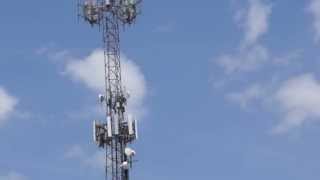As the nation’s top four carriers work to offer nationwide, high-speed data service, more cell towers are now supporting multiple carriers. But co-location is not enough; operators and tower companies say new towers are needed in many locations.
“We are building more towers today than we have ever built in the five years that I’ve been here at American Tower,” said Steven Marshall, president of American Tower’s U.S. tower division. “There is a need to fill these coverage holes in the carrier’s networks … and the carriers are doing a valiant job of trying to fill those holes.”
Despite a recent spending slowdown by AT&T, the other tier 1 carriers appear poised to continue network builds and upgrades, and AT&T’s activity could pick up again later this year. Sprint chief network officer John Saw told analysts at the company’s “Happy Connecting” event that “every carrier needs more cell sites,” according to Wells Fargo analyst Jennifer Fritzsche. Saw did not distinguish between new construction and applications for co-locations, but Fritzsche thinks he was referring mostly to co-locations.
Clearly, there are still many, many towers with room for more tenants. Almost 10,000 towers owned by AT&T were purchased by Crown Castle last year, and Crown Castle is now accepting applications from other carriers for space on those towers.
“We are in the middle of integrating 9,700 towers, so that’s a big process, but we are getting a lot of help from AT&T and taking applications on those sites and we are very pleased with what we see,” said Crown Castle CEO Ben Moreland at the PCIA Wireless Infrastructure Show this spring. Moreland expects that by fall, Crown Castle will be processing applications for these towers at the same rate as for its legacy towers.
“We see a lot of activity going on in the market right now by all four carriers and these sites are open for business, open for co-location,” said Moreland. He added that co-location activity still far exceeds new construction activity.
“New tower construction in our business is still a very minor part of the overall business,” said Moreland. “With about 200,000 sites in the U.S. that are co-locatable, a very, very small percentage are needing to be built.”

Filling the holes: carriers race to add cell sites
ABOUT AUTHOR
